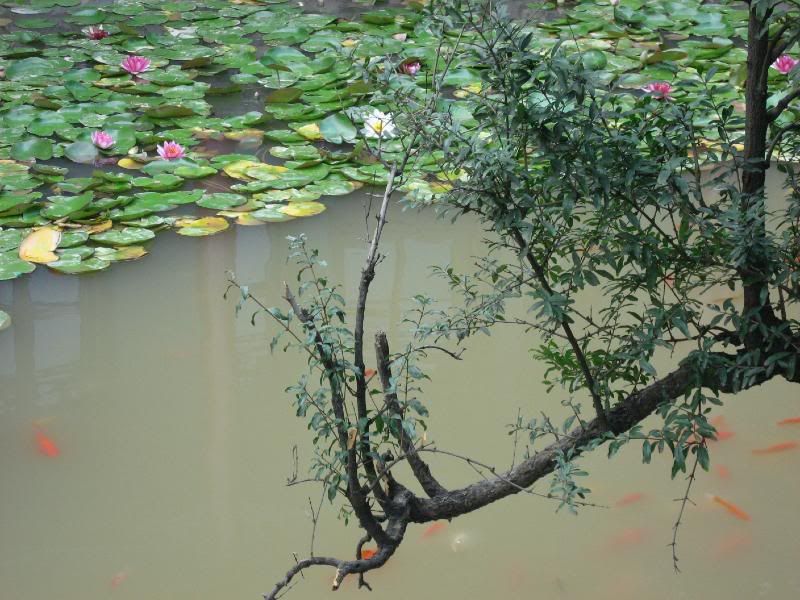It is so great to be back in Xian and in a big city, not by New York standards, but by China standards. Xian has always held a special place in my heart, since my first visit back in 2004. I find the Old City so enchanting with so much to see and experience. I just love walking the streets and markets, and finding interesting things to buy and just see. It represents Chinese culture at its best!
Just a little history on Xian . . . it used to be the capital of China before Beijing, but the city was known as Chang’an. It was the starting point of the great trade caravans of the Silk Road. Xian was at its most glorious under the Tang Dynasty when it opened its doors to the widely cultural and economic influences of Byzantium, Persia, Arabia, the Kingdoms of Central Asia, Tibet, Burma, India, Korea and Japan. The Silk Road was at its golden Age under the Tang Dynasty. The Silk Road brought Islam, Buddhism and Christianity to the Shaanxi province, where it has flourished throughout the centuries. Xian is a melting pot of Silk Road culture.
Our first stop was Huaqing Hot Springs, which is located in the foothills of Lishan Mountain. Huaqing Hot Springs served as the luxurious bathhouses for the imperial dynasties. Its most famous inhabitants were Yang Guifei and Chiang Kai-shek. Yang Guifei was the concubine of Emperor Xuanzong, and considered one of the most beautiful women in all of China. Huaqing Hot Springs was a gift to her from the emperor. Ah, what men will do for a pretty face. Chiang Kai-shek, the leader of the Nationalist Army, used Huaqing Hot Springs as his headquarters. It was the site of the “Xian Incident.” In 1936, one of Chiang Kai-shek’s own men collaborated with the Communists to kidnap him. Chiang was later freed when Stalin put pressure on the Communists to free him, and was exiled to Taiwan after his release.
Huaqing Springs


The Statue is Yang Guifei, the most beautiful woman in all of China.

Xian’s most famous calling card is the Qin Terracotta Army. This was the third time I have visited what the Chinese call the “Eighth Wonder of the World,” and I am still in awe of these statues. All of them were handmade and there are thousands of them, most have still not been exhumed because it is better to have them buried for preservation. Emperor Shihuangdi had them built for his burial mound, so that he would have an army to protect him in the after life. It sounds weird, I know, but it is true. He started planning his burial mound before he was even close to death because he knew his plans would take years to complete. Incidentally, my family and I are descendants of the Qin Dynasty, so I keep telling people that I am technically a princess, and they laugh, but it is true. My mother says it explains why I am so mean to the kids in class because Shihuangdi was a really cruel emperor and ruled the people quite harshly.
Qin Terracotta Army Museum
Chefs making noodles for lunch - yummy!


The Eighth Wonder of the World




What makes these people so special that they get to go into the pit and I don't?

Today, we visited the Forest of Steles Museum. It is one of my favorite museums in Xian. It basically consists of over one thousand inscribed stone tablets. Most tablets are basically famous Chinese writings, such as Confucius’ Analects, but some are beautiful works of art. I can’t believe the artistic ability these people possessed to carve Chinese calligraphy and works of art into stone – so beautiful. I even learned from one of the stone tablets that Christianity came to China a thousand years before the official date recorded. The tablets have also recorded the happenings of the Silk Road, and the museum itself also houses many Silk Road relics.
Forest of Steles Museum
A header from one of the stone tablets.

A man making a scroll from of the stone tablets.

A garden of carved stone figures.

There is so much more to show you of Xian, so check back soon!

2 comments:
I was worried when i didn't see any new post from you for a couple of days. i loved the pictures of the terra cotta warriors, they have been a source of interest for me for several years, and now i know someone that was actually there to take pictures of these things personally!! i love it!!!
I guess I haven’t read such unique material anywhere else online.
silk road
Post a Comment